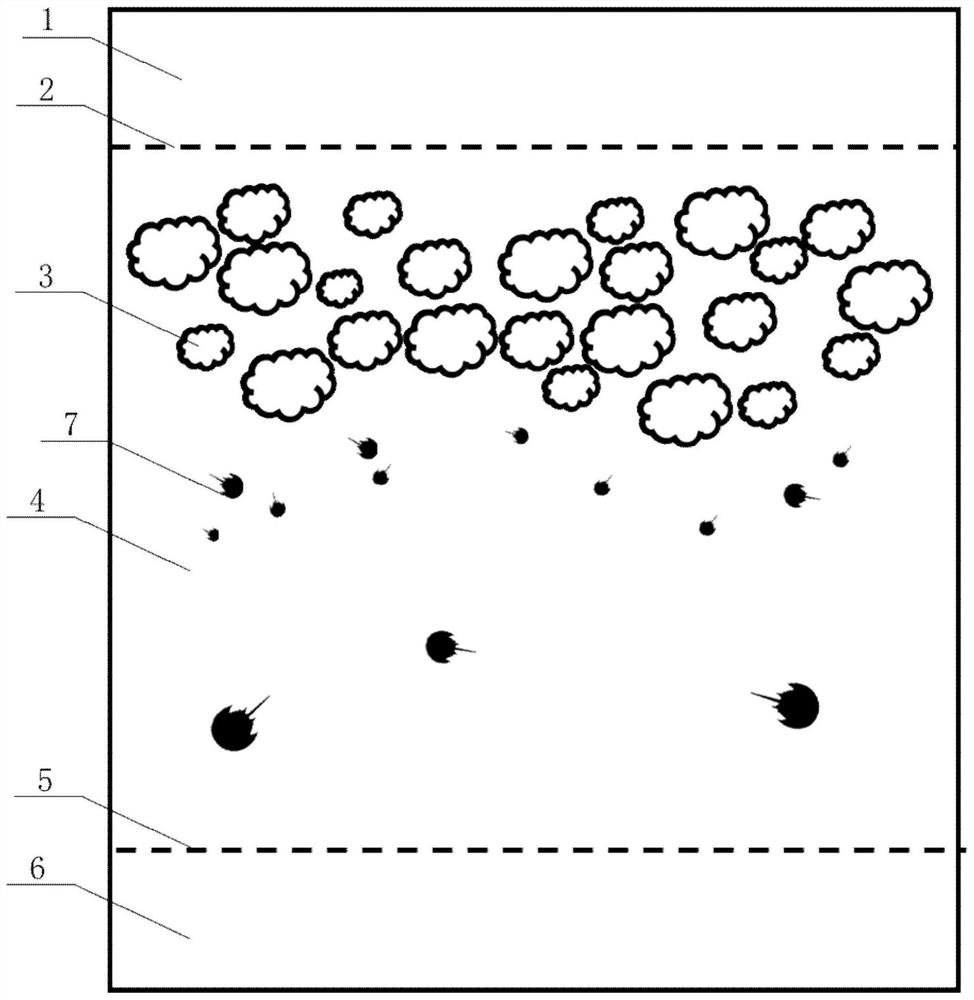A kind of scientific releasing method of Chinese horseshoe crab seed
A seedling and scientific technology, applied in the field of proliferation and release of rare marine species, can solve the problems of unreasonable and unscientific artificial release process, and achieve the effects of reducing the risk of predation, improving the survival rate and prolonging the breeding time.
- Summary
- Abstract
- Description
- Claims
- Application Information
AI Technical Summary
Problems solved by technology
Method used
Image
Examples
Embodiment 1
[0032] 1. Site selection for release: release in the intertidal zone (4) mangrove (3) periphery of the existing nursery of horseshoe crabs in China;
[0033] 2. The source and specification of released seedlings: in spring and summer, the crabs that landed and spawned are transported to the adjacent farms to induce spawning, and the seedlings are bred in an artificial environment from 11 months to 7 years old. The width of the carapace 38 ± 2 mm, the seedlings are released on the same beach as the source of the pro-Limulus;
[0034] 3. Health inspection of released seedlings: extract 1-5% of the total number of 7-year-old seedlings for health inspection to ensure that the released horseshoe crabs have a good health level: the cell survival rate is 70-82%, and the proportion of spherical granule cells is 60-87%;
[0035] 4. Timing of release: release the seedlings to the intertidal zone during the ebb tide from May to July;
[0036] 5. Transport seedlings: 10-15 tails of 7-yea...
Embodiment 2
[0039] 1. Release site selection: Monitor the habitat conditions in the damaged Chinese horseshoe crab nursery to ensure that it is consistent with the existing nursery conditions: the sediment is sandy and muddy, with a particle diameter of 0.22-0.55 mm and a total organic content of 3-23%, interstitial water content 16-23%, surface water salinity 20-34‰, pH 6.4-8.0, dissolved oxygen higher than 6 micrograms per liter, there are small polychaetes, bivalves and crustaceans. (4) Set up fixed nets or other anti-predation facilities, mesh 7-10, and the tidal flat area of the seine net is more than 2000 square meters to provide enough tidal flat area for the seedlings to forage;
[0040] 2. The source and specification of released seedlings: buy horseshoe crabs around the sea area where the release site is selected, transport them to the adjacent farms to induce spawning, and breed the seedlings in an artificial environment for 1-2 months to the 1st age stage. The first-year-old...
PUM
 Login to View More
Login to View More Abstract
Description
Claims
Application Information
 Login to View More
Login to View More - R&D
- Intellectual Property
- Life Sciences
- Materials
- Tech Scout
- Unparalleled Data Quality
- Higher Quality Content
- 60% Fewer Hallucinations
Browse by: Latest US Patents, China's latest patents, Technical Efficacy Thesaurus, Application Domain, Technology Topic, Popular Technical Reports.
© 2025 PatSnap. All rights reserved.Legal|Privacy policy|Modern Slavery Act Transparency Statement|Sitemap|About US| Contact US: help@patsnap.com

